When we talk about interior design, we cannot overlook the importance of interior stairs. Beyond their function of connecting levels within a house, these vertical structures can be transformed into true architectural masterpieces and decorative elements that add a distinctive touch to any space. On this tour, we’ll dive into the fascinating variety of indoor stair types, exploring their unique designs and standout features that go beyond the functional.
What kind of stairs are there?
Straight stairs
Straight stairs are the most basic and simple design. They move from one level to the next in a straight line with no twists or turns, connecting levels with clarity and efficiency. Its clean, minimalist design is a popular choice in modern spaces and can complement a variety of decorating styles. They are ideal when space is limited and functionality is the top priority.

Spiral stairs
Spiral staircases are a stylish and compact option. They rotate around a central axis, making them ideal for smaller spaces. They can have an open or closed design and add a sculptural touch to interior decoration.
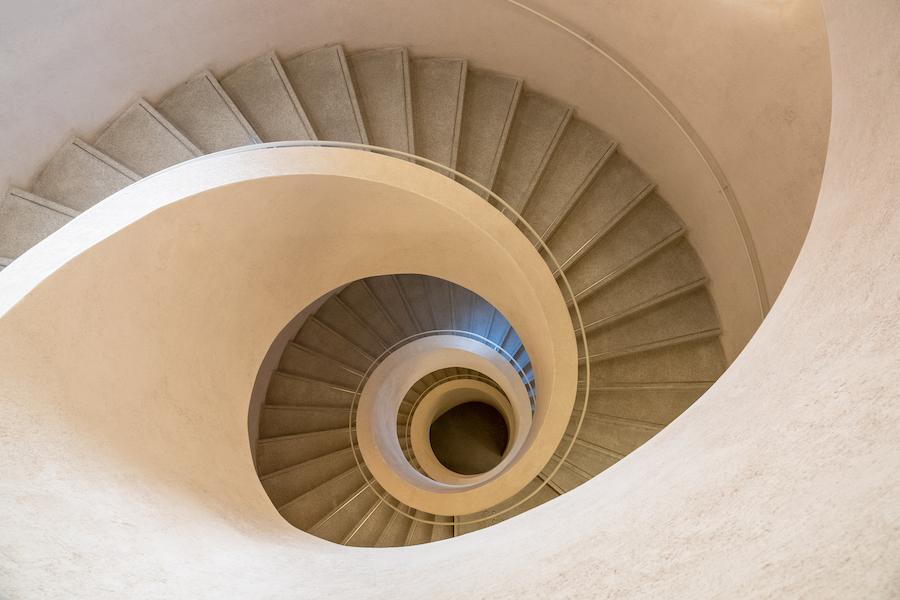
Stairs in L
These stairs consist of two flights connected at a right angle. They offer a smooth transition between levels and often feature a landing at the pivot point, allowing for a break in between. L-shaped stairs are versatile and adapt well to different spaces.
U or Double L Stairs
Similar to L-shaped stairs, this design consists of three flights connected at two right angles. It provides a more solid appearance and can be a space-efficient option, especially when a change in direction is needed on the stair.
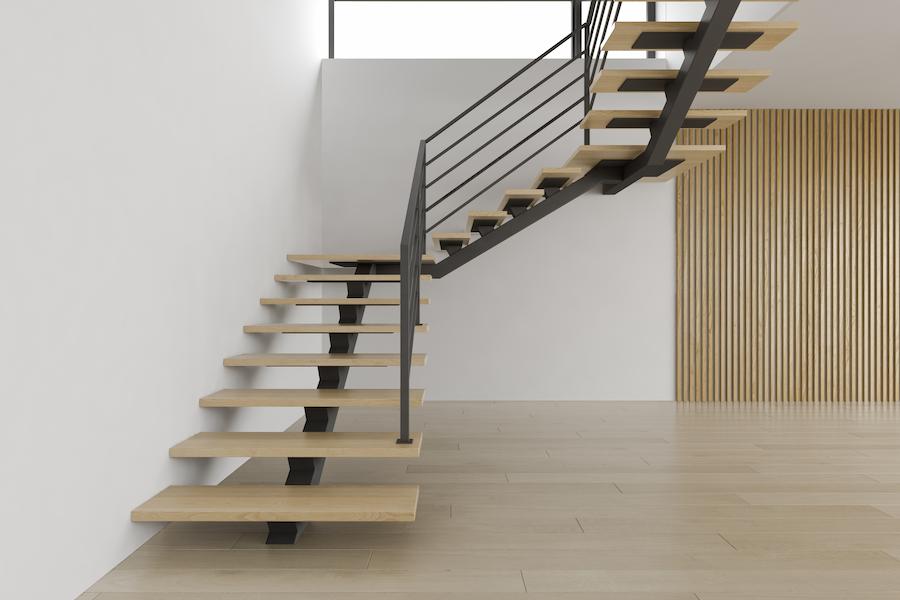
Open stairs
Open stairs have floating steps or no visible partitions between them. This creates a feeling of lightness and modernity. They are ideal for contemporary and minimalist spaces, and allow light to pass through them.
Stairs with partitions
Contrary to open stairs, these have partitions or structures that connect the steps. They can offer a more traditional style and provide a greater sense of security when getting on or off.
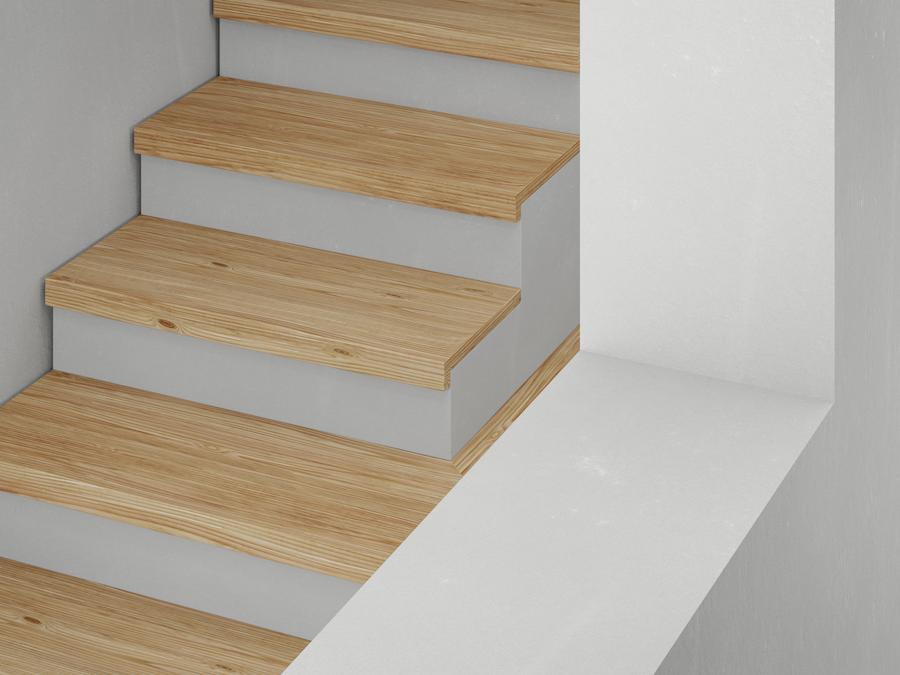
Glass stairs
Glass stairs are a bold and modern option. They use glass panels as steps and railings, creating a sleek, see-through look. They are perfect for maximizing light and space inside.
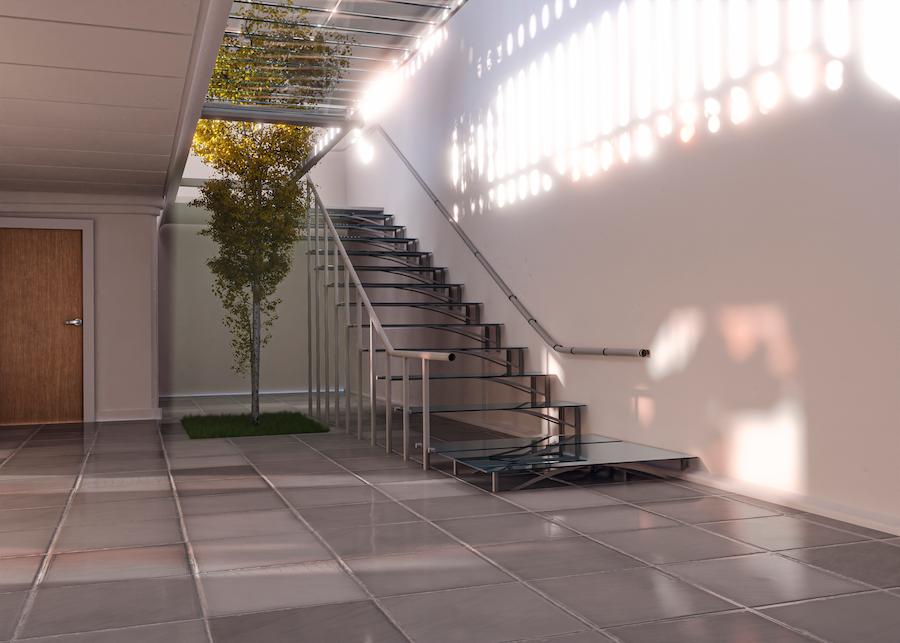
Floating stairs
These stairs have steps anchored to only one side of the wall, giving the illusion that the steps are floating in the air. They are visually striking and can make an architectural statement in an interior.
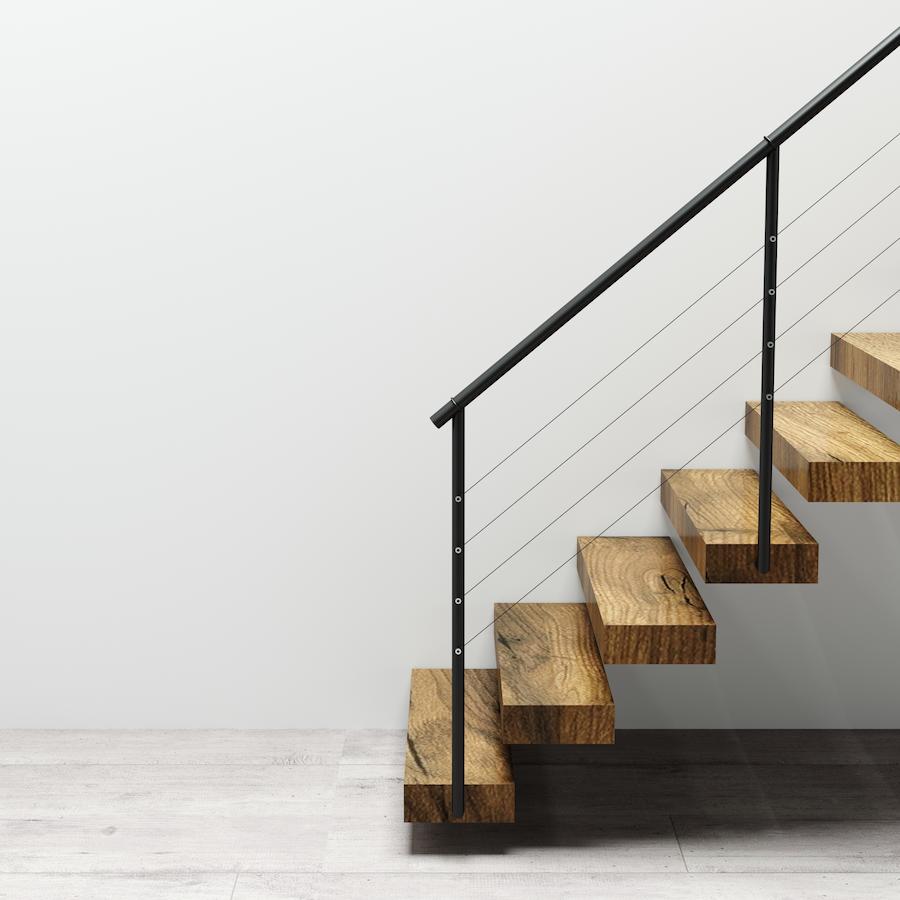
Stairs with storage
Stairs with storage built into the steps or in the spaces between them offer a functional solution for small spaces. They can be used as shelves, drawers or cabinets, taking advantage of every available centimeter.
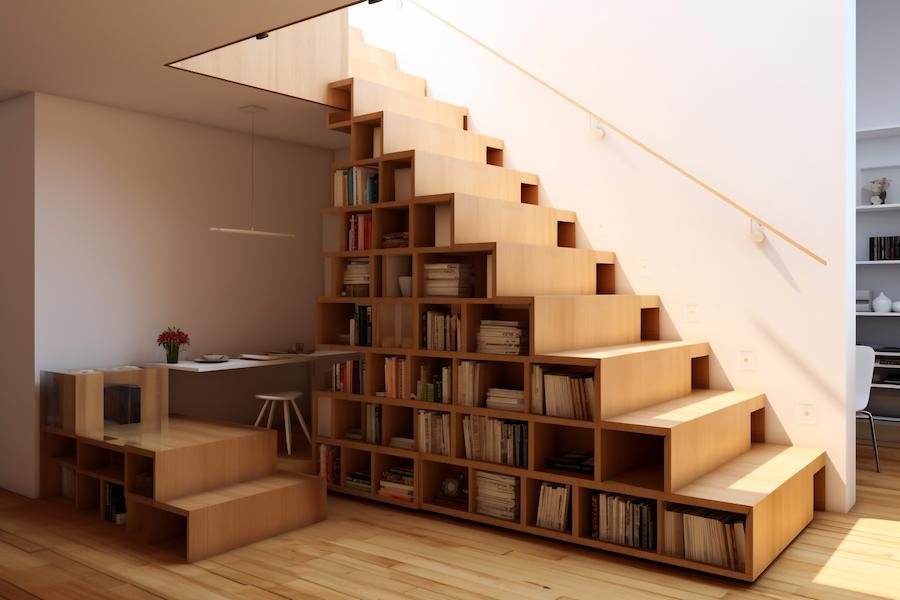
Curved stairs
Curved stairs have a fluid and organic design similar to spiral ones, the difference is that they are more open. They can be a true centerpiece in the interior, adding a touch of elegance and sophistication.
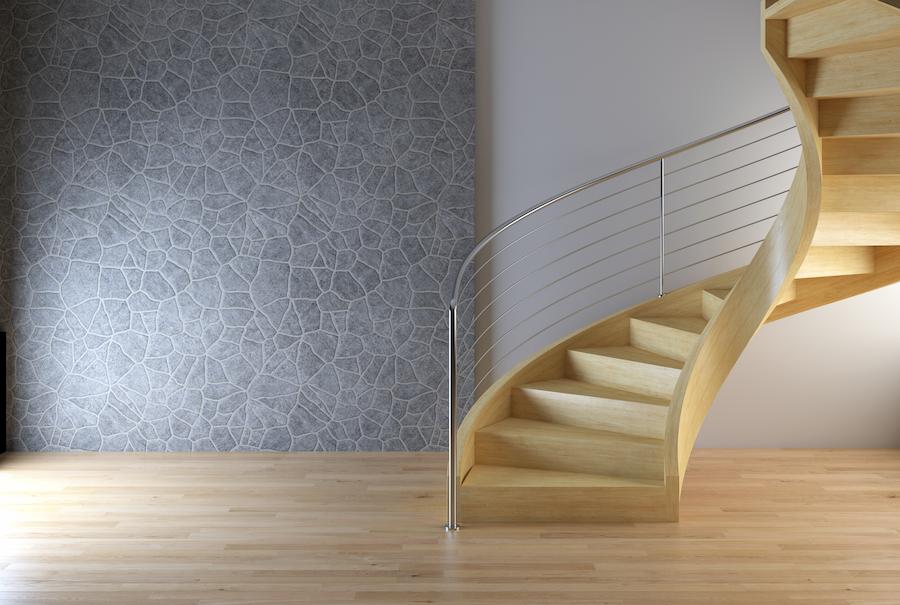
When choosing the type of indoor staircase, consider the overall aesthetic of your home, the space available, and the functionality you want. Each type of staircase has its own charm and can contribute to the design and atmosphere of your interior space.
Points to consider when choosing indoor stairs
Available space
Evaluate the available space to determine which type of ladder is the best fit. Choose a layout that maximizes efficiency and use of space.
Decoration Style
The staircase should complement the overall style of your home. You can opt for a design that blends in harmoniously or that contrasts to create a focal point.
Security
Consider safety when designing the stairs, railings, handrails and non-slip steps are essential to prevent accidents. You can choose to customize the railings with unique designs, such as intricate geometry or unusual materials, to add an eye-catching design element.
Functionality
Think about how the ladder will be used. If you need storage or space under it, integrate this functionality into the design.
Lightning
Proper lighting is key to a safe and visually appealing staircase. Consider adding lighting on steps, handrails, or nearby walls.
Steps and Step Height
Steps should be comfortable for going up and down. Keep the height and depth of the steps consistent to ensure a comfortable experience.
Material and texture
Choose durable, wear-resistant materials for treads and railings. Consider the texture of the materials to avoid slipping.
Budget
Designing and building an interior staircase can have a wide range of costs. Establish a clear budget and look for options that fit within it.
Finally, do not forget to give it specific maintenance, different materials require different types of maintenance. For example, if you have a wooden staircase, it may need the occasional polish and touch-up to maintain its shine. Metal stairs may require corrosion protection and specialized cleaning. If your staircase has a surface treated with varnishes, sealers, or paint, consider reapplying these treatments according to the manufacturer’s recommendations to maintain protection and a fresh appearance.
By maintaining your indoor staircase regularly and properly, you will extend its life and preserve its beauty and functionality. In addition, constant maintenance will also contribute to the safety of those who use it, which is of the utmost importance in any home.
0 Comments